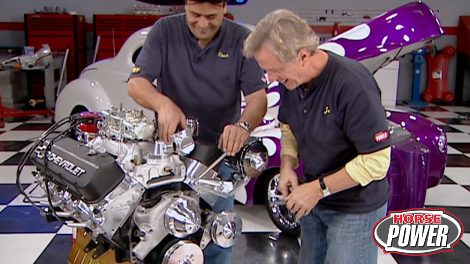
'69 Chevelle 502 Build
We start the transformation of a 1969 Chevelle with a powerful 502 engine build. By replacing the old 454 engine, adding performance enhancements, and planning future upgrades, we aim to maximize horsepower and create an unforgettable high-performance vehicle.
Season 9
Episode 10
Hosts: Joe Elmore, Chuck Hanson, Mike Galley
First Air Date: June 1, 2015
Duration: 18 minutes 1 second




























